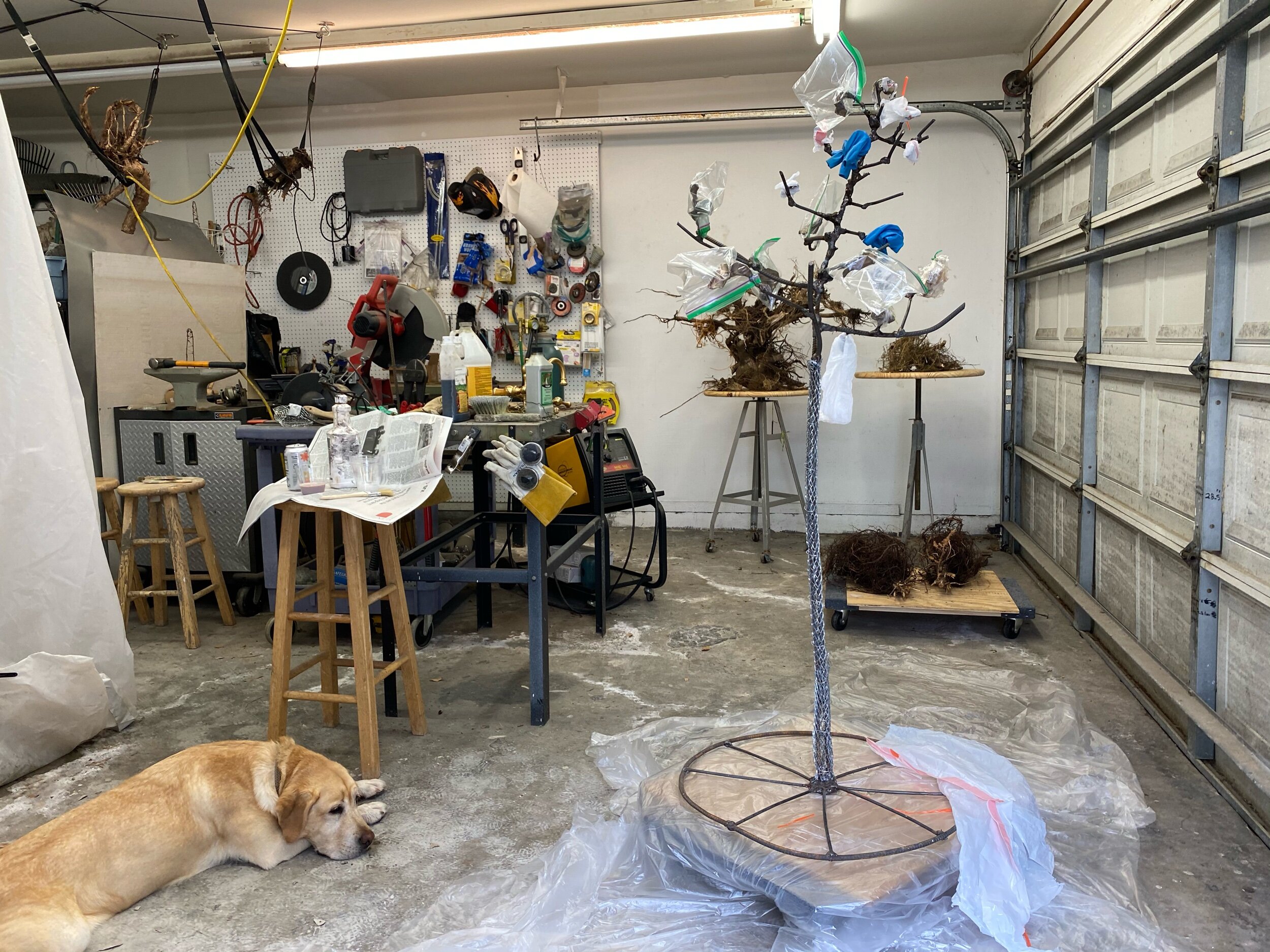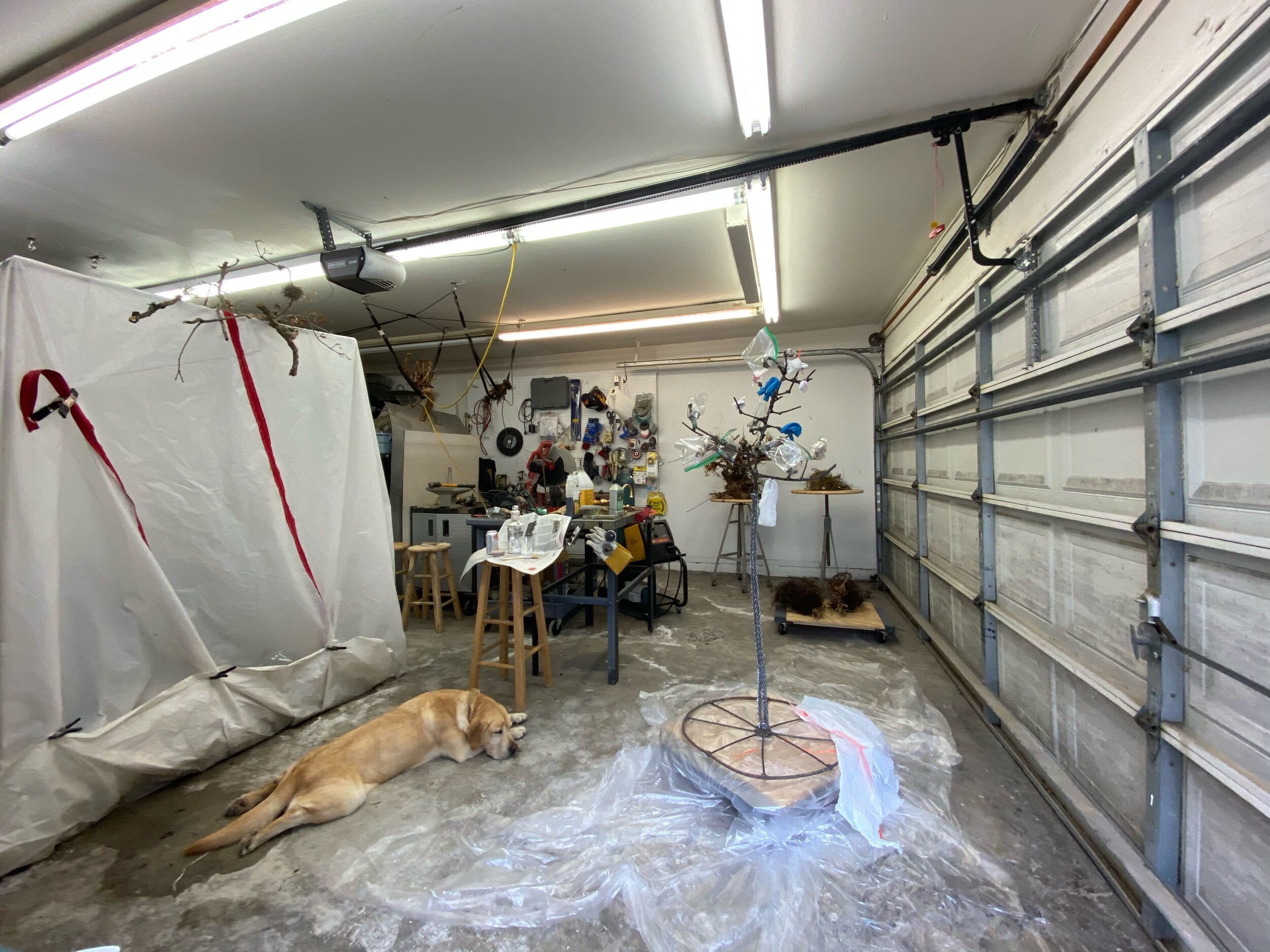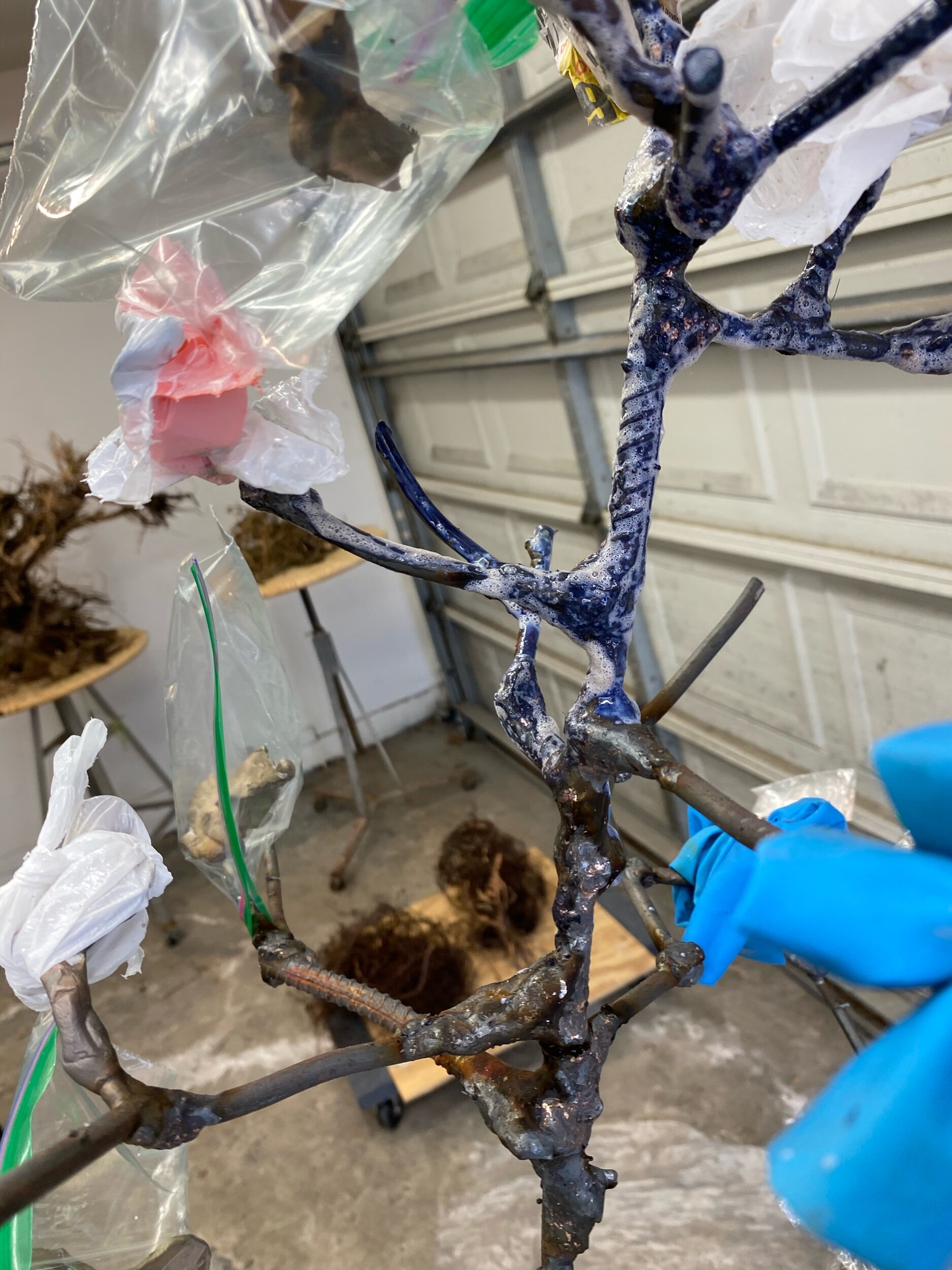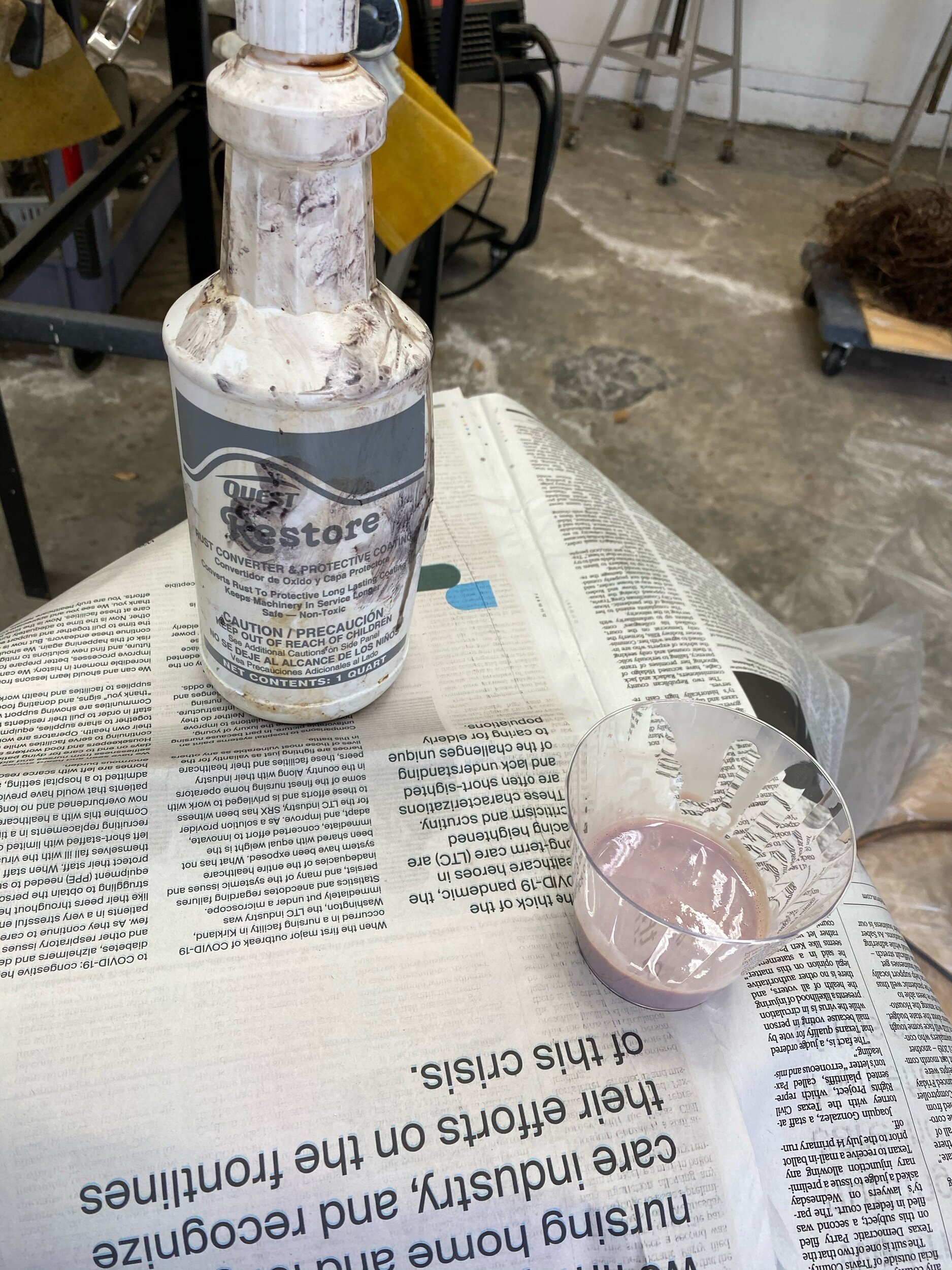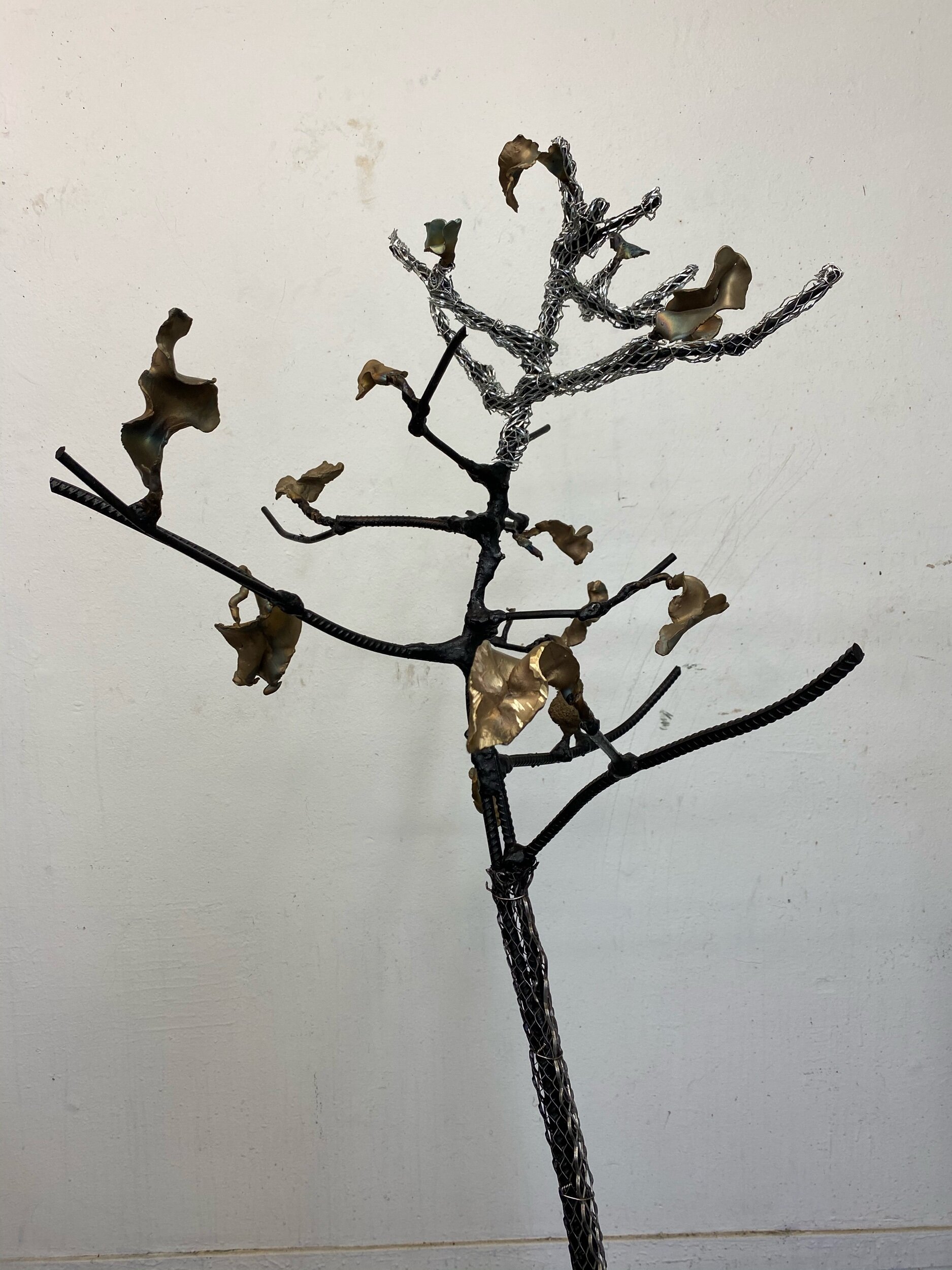Art Activist and City council woman #2
This was awesome to receive, I am feeling hopeful. It is amazing to have a city Council Woman who cares and listens to citizens opinions. Screenshot from my phone email.
Sally and Hannah
The video of the FY21 budget workshop-Parks and Recreation was very informative.
Here is what I got out of the video that will help you move the city in an environmentally forward direction. I have broken it down into five steps.
Steve Wright knows the value of native plants and grasses. He expressed that he would like to move more in that direction. He does not because the public is not educated. With Steve on board, this is a great opportunity, and the timing is perfect. Sally, it is great you identified this opportunity, by leading Steve you can save the city money and the planet.
Step One – In Steve's presentation, #5 Greenspace Management (GSM), the city is spending $2,000,000 on mowing esplanades, and in #15 Quality Assurance, they spend $2,500,000 for safety training to maintain the esplanades. Making all esplanades native grasses is a change that will free up a significant amount of money and help all insects as well as the bee. With Covid 19 sucking the life out of the country, the financial savings alone is reason enough to make the transition. This change will start the education of the citizens. Now is the time to take the first step in making Houston a leading city in environmental policy and help with the budget.
Step Two – Steve did not mention the chemical additives or equipment the city uses. City Parks and Recreation would also save money on the chemicals used on manicured landscapes such as herbicides, pesticides, fungicides, and neonicotinoids. This change would also impact the dollars spent on equipment and fuel for lawnmowers. Have Steve add that number up for you.
Step Three- Have Steve's people look at every area they manage: the city libraries, trails, parks, sports fields, golf courses. The zoo should also be charged with evaluating its grounds. Have them identify pockets in these city public spaces where they can save money by transitioning to native plants. There is a lot of precedent in other cities for native plant golf courses. Golf courses use an extreme amount of labor and chemicals; this could be a significant number in the budget.
Step Four – Steve mentioned Public Works land. It was not clear whose budget it is in, but it should be maintained in an environmentally forward thinking manner.
Step Five – Steve was concerned about the public's knowledge of the benefits of native landscaping versus the mindless conformity of the manicured landscapes that we are used to seeing. This education is a project for his new social media employee. In addition, the Mayor should call a press conference and make a big deal of the City Councils' commitment to not only the health of it’s citizens but also the environment and not mindlessly conforming to unhealthy chemically dependent landscape practices and to saving Houstonians a lot of money. The Mayor can also go into the benefits of restoring native prairie vegetation as it decreases water runoff and flooding, increases soil absorption of water and slows floodwaters on land.
A press conference is excellent advertising. It can also be addressed on the citiy’s website.
If you need inspiration, look at the 5/2020 National Geographic, Where Have All the Insects Gone? Pp. 40-65. The article is a study from 1989 to 2016 of flying insects. The study reported a 70% decline. You will find quotes such as "ecological Armageddon", "we find ourselves in the middle of a nightmare", "According to the website Altmetric, which tracks how often publish research is mentioned online, the study was the sixth most discussed scientific paper in 2017."
Insects do the dirty work for us; they pollinate, disperse seeds, are food for freshwater fish, and about every land animal, from reptiles to birds. They decompose our waste; without insects dead, organic matter will pile up. N. G reported the work insects do is equivalent to $57 billion a year in the US.
After you tackle the City Parks, we can look at residential and commerci
Sapling #6 - restore and lath
The only good thing about quarantine is it provides time to finish projects. I need to get my welding area cleared of these faux bois pieces.
Today I am starting back on the faux bois sapling. It has bronze leaves and 1 bronze bird. It is a special request for my daughter Sage. I started it two years ago and had exhibitions that came up that interfered with my completion. Oops-
She is now engaged to be married during the pandemic June 12, 2020. This is little sapling will now for both Sage and Cameron.
I put protective coverings over the bronze pieces.
My assistant Tobi is ready to help.- sarcasm
Here I am painting restore on the steel. Restore prevents it from rusting.
When you pour it is pink, it turns purple on the steel.
purple and bubbles.
After the restore dried I started attaching the lath
The lath th is sharp like a razor blade.wearing protective arm wear, I cut strips of the lath and attach it to the steel with stainless steel wire with airplane safety pliers. The lath can not wiggle. The concrete liquifies with movement so the lath has to be tight and firm.
Endangered Knowledge: The Soul of Humus #1a and Sculpture Month Houston
In a moment of global uncertainty, I ask myself, what materials would I use to leave a message for future civilizations? As I think of artists who painted caves, of muralists from the past, of artifacts from ancient civilizations, I am curious about how we leave a mark. My answer is tied to the natural world: much of my previous work has been about conservation issues, looking specifically at bees, at waterways, at recovery from Hurricane Harvey, at bison and now, at grass. And so, if I were to write a message to the future, I would use grass to write it, and bison to carry the message.
Endangered Knowledge: The Soul of Humus
For this year's Sculpture Month, I propose a site-specific sculpture of a bison, made from a welded steel armature, a work of land art covered in topsoil and dried native grasses. This is part of a comprehensive installation that I am currently developing, which considers the role of the American bison within Houston's specific soil ecological history. The work is titled Endangered Knowledge: The Soul of Humus.
It is inspired by the words of M. Thomashow, who writes, "Record natural history to the collective memory so that it is no longer endangered knowledge." For several years, I have been researching grass-fed food production, attending soil conferences, and visiting regenerative ranches. Research in these fields show how to fight desertification and reverse climate change through regenerative agriculture practices. Interestingly, this natural history of living soil, how it evolved in the Houston Coastal Prairie, and its essential part within microbial communities in human health, is not common knowledge.
Description of Work
In the hide of a sculpture, I tell the narrative of soil health. My sculpture will record this endangered natural history through the dense coat of the powerful humus-built bison, that will be dripping in the armor of locally sourced dried native grasses and sedges, seeds, and pods. The male bison will be supported by a welded steel armature, covered in a stainless-steel lath. The bison's skin, made from these dried grasses, will be attached to the lath with a Houston mud composite. I propose the 11' long bison be exhibited in the center of a large grain silo, the bison in an actively grazing stance, head down in plow position, his hump rising robust and bushy out of his heavy forequarters to 6.5' tall. Lighted from inside the grain silo funnel, viewers can approach the bison and intimately inspect the diversity of the native plants implanted in its pelt.
Ecological History
Historically B. bison functioned as the first farm equipment. The grass seeds clinging to their burly coats were carried across the plains as they migrated north to south and back between seasons, like tractors up and down fields. Herds of tractors not green, but a rich brown harvested the plains with their appetites, each bite stimulating new root growth. The old roots withered into cavities that served as dwellings for a variety of keystone species, and became underground cisterns collecting floodwaters for drier seasons. Their coats dropped kernels and cuttings as the winds ruffled their beards and chaps, and when they took dirt baths in buffalo wallows dug with their horns. Massive roaming compostors, a single bison cow daily dumping 40 lbs. of fresh manure onto these seeds and drilling them into the earth with their spade-like hooves, sprinkling them with the perfect prescription of nitrogen, phosphorus, and potassium-rich urine and then moving in a predator safe tight herd on to the next buffet. With time the newly sowed fields sprouted new growth of blades, stems, and leaves of countless shapes, sizes, and heights. This diversity of leaves fit like puzzle pieces into dense living solar blankets, harnessing carbon from the air and returning it as sugars to feed the dynamic root microbiomes below the earth’s skin. The complicated relationship between the soil microbiome and the human intestinal microbiome is one of the most dynamic topics in biomedical research. Flocks of birds mutualistically
living off the pests harbored on the bison followed the herds, drinking from and bathing in rainwaters that collected in the bison wallows, building their nests from clumps of bison fur. Recent studies show the fur provides a health benefit to unborn chicks. Bird and butterfly habitats were abundant when the bison roamed.
Relevance
Global warming, food security, drought/flooding, wildlife habitats, economic instability, and health – these problems are not new to humankind. The archeology of ancient civilizations has recorded connections between the longevity of civilizations and the health of their soil. The United Nations reported in 2014 that the world's topsoil would only last 60 more growing seasons. Soil scientists around the globe agree that solutions to these issues are rooted in our treatment of soil—the skin that covers our planet.
Message to the Future
The armor that protects the epidermis in the Gulf Coast prairie is grass. The animal whose population peaked at 30 million, is B. Bison. Combine native grasses with ruminants and the grasslands decompose into rich organic matter; for every 1% increase per acre of biological organic material, the soil can hold an additional 20,000 gallons of water. Restoring native prairie vegetation decreases water runoff and flooding, increasing soil absorption of water and slowing floodwaters on land. With extreme building practices and concrete hardscaping, reimagining the landscape of Houston's 600 square miles of real estate can make a significant impact on the region’s flooding. The prairie grasses' roots can extend from eight to fourteen feet deep: these roots sequester carbon like an upside-down rainforest. Changing our agricultural practices is an important step towards turning global warming right side up. Telling the dynamic story about these relationships between the grazing herds, the living soil, and finding ways to reimagine urban landscapes and agricultural practices in holistic and regenerative ways are the center of my current research and sculptural practice.
The impact of the bison on sustaining topsoil—and, therefore, life—need not be Endangered Knowledge. The role bison play within the prairie ecosystem—their ability to increase photosynthesis, reduce competition for water, and regenerate depleted, unsalvageable, lifeless prairies back to productive and bountiful, nutrient-producing land and wildlife habitats—needs to be carved into our modern systems. Recording this Endangered Knowledge into the consciousness of humankind will stimulate grassroots efforts and stop the cultivation of soil depletion and return the natural process to the treatment of the skin of our planet. A Parietal artist in 2020, I will use grass to record the Soul of Humus so that it will no longer be Endangered Knowledge.
Additional work
Soul of Humus will be the first piece in my Endangered Knowledge body of work. The complete body of work will eventually consist of the following sculptures: 4 pedestal-shaped sculptures of roots and soil, measuring approximately 12" X 12" X 36"; installations made from native grasses and their roots (size and number to be determined); 1-5 bronze castings of bison dung with their spade-shaped hoof prints, dung beetles, and mushrooms. I am also currently in conversation with a bison rancher to secure a bison heart to float in a glass case of formaldehyde: the bison, the largest mammal of the western continent, is the heart of our soil diversity, it is the western symbol of a healthy planet. The health and longevity of civilization, as we know it, is dependent on finding ways to mimic the natural process stampeded into the bayous of Houston. In this sculptural series, I look closely at the components of this process and the environmental interrelationships unique to the Houston area and world health.
Footnote-
Bison vs Buffalo which name is correct? The common name Buffalo has been widely used, since early settlers were naming them as their European and Asian counterparts. The correct name of the last American surviving bison is B. Bison.
Further Reading and information –
- Allan Savory on how to fight desertification and reverse climate change
- Soil as Carbon Storehouse: New Weapon in Climate Fight? - Yale E360
- A Prehistory of Houston and Southeast Texas,– D. Worrall, coming fall 2020
- Can Livestock Grazing Stop Desertification?
https://www.scientificamerican.com/article/can-livestock-grazing-stop-desertification/
- Dirt: The Erosion of Civilizations, by David R. Montgomery
- Soil Biology and Land Management https://www.nrcs.usda.gov/Internet/FSE_DOCUMENTS/nrcs142p2_052489.pdf
- Wildlife that Depend on Bison
Sample Work and Visual Support Materials for Proposed Sculpture
Two small sculptures that are made with the same structure, process, and made with native plants-
The bison will be furrier than these small birds are and would be dripping in a thick coat of textured dried grasses.
Hay Day Peace Pigeon 2016
15” X 12” X 8”
welded steel armature, plaster and hay
Feathery Finery Peace Pigeon 2016
12” X 12” X 6”
steel armature, steel lath, plaster and plants
Three large sculptures that are made with the same armature and process, but I have used metal instead of dried plant cuttings on the surface for texture.
Broken 2018
40” X 29” X 55”
Welded steel armature, stainless steel lath, concrete, wire cloths and wire
Sonata in 4D 2018
6’6” X 5’5” X 5’
steel welded armature, stainless steel lath, plaster, wire cloths and wire
Bringing Home the Bacon 2019
66” X 42” 60”
welded steel armature, stainless steel lath, hydro stoner, wire cloths and wire
There are many textures of native grasses at the Katy Prairie Conservancy and Buffalo Bayou.
If you accept my proposal, I plan on asking the Katy Prairie Conservancy and the Buffalo Bayou Partnership to allow me to source my grasses and plants from their properties.
Sample of one of the many amazing textures on the various grasses and plants in the coastal prairies.
This shows the movement I am visualizing on the coat of the Bison
Below are Some of the source images I will use while sculpting the bison.
most of these I took doing research at Roam Ranch this summer, fall and winter.
This shows the position of the head I am looking for, it is grazing but you can see the face. This is a cow (female) My piece will be a burly big old male.
This is a large bull but it is not very old. My sculpture will be an old male that will have scrapped up and chipped horns from fighting and digging wallows and a massive thick (and dripping with dried grasses) big beard and chaps. This side view is pretty close to what I have in my head. I might have his head turned slightly to one side. That could be determined by which side of the building the silo would be on. The face will be more interesting and textured than the back side of the bison will be. My sculpture would be grazing on taller grasses. I would also raise his head for more eye contact
This is a good image of a bull’s face. Not my photo.
another view- not my image
Sapling #7 - lath, 1st coat and second coat.
My daughter special requested this piece. She asked if I could make her a sapling. My response was I could try, but the pencil size steel limits how thin I can make the tree limbs. Long story short, the sapling grew old fast. After the first coat the sapling limbs we're no longer sapling thin.
Covered in lath
Keeping an eye on my mix
The first coat - the bronze leaves are covered in green plastic to protect them.
First, I paint on the bonding liquid.
The piece is now ready for coat number 2.
Coat number 2 ✅
Here is the image edited super light in order to show the texture.
More details
Detail of upper branches
A little more concrete need under the bird.
Detail of trunk
The lower trunk and base.
The abundance of knots is evidence that this tree is the host of many insects and good bacteria. Bees and other insects use trees for nesting and receive antiviral properties from the fungus and bacteria that grow on the tree.



